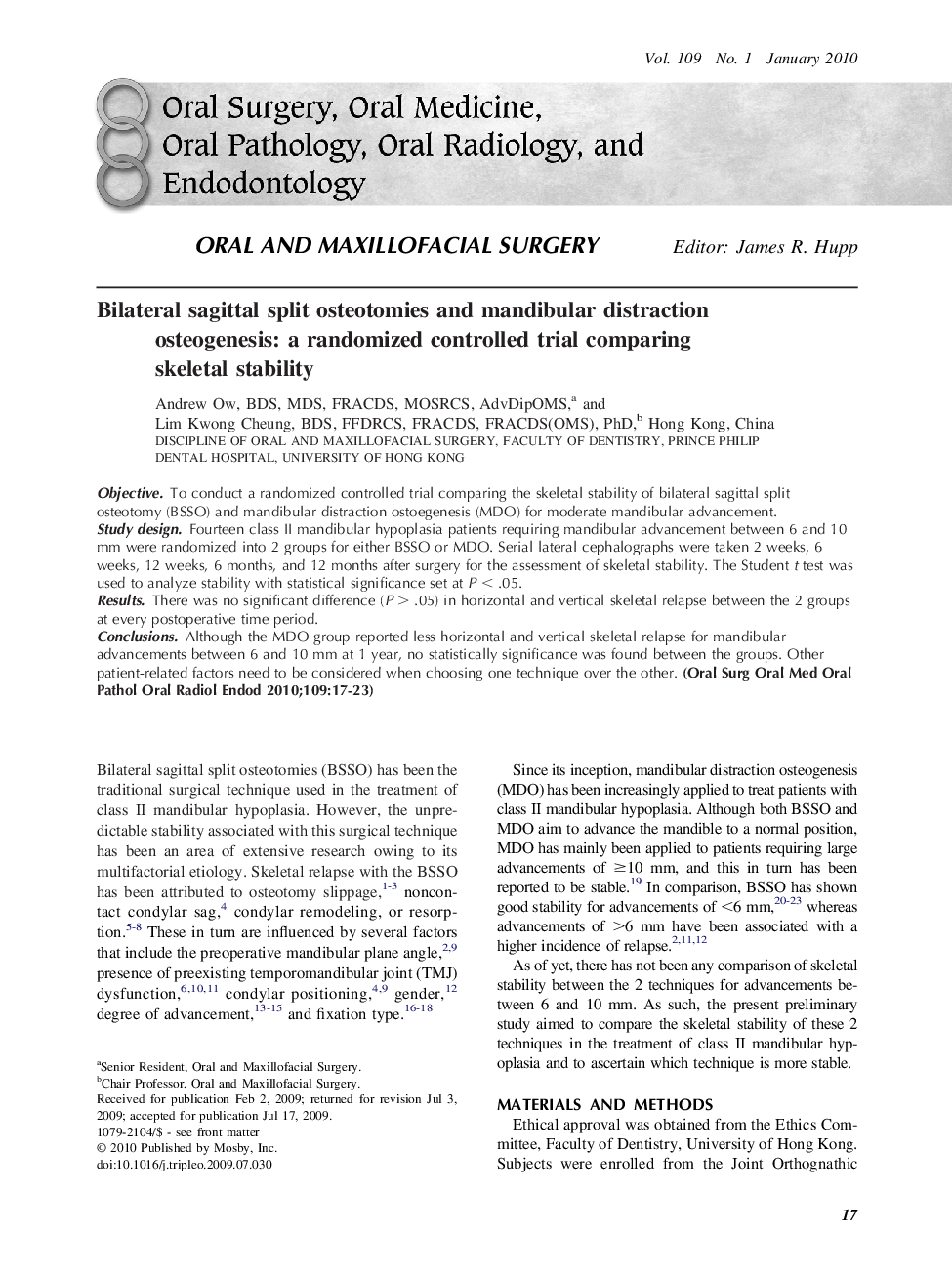| Article ID | Journal | Published Year | Pages | File Type |
|---|---|---|---|---|
| 3167722 | Oral Surgery, Oral Medicine, Oral Pathology, Oral Radiology, and Endodontology | 2010 | 7 Pages |
ObjectiveTo conduct a randomized controlled trial comparing the skeletal stability of bilateral sagittal split osteotomy (BSSO) and mandibular distraction ostoegenesis (MDO) for moderate mandibular advancement.Study designFourteen class II mandibular hypoplasia patients requiring mandibular advancement between 6 and 10 mm were randomized into 2 groups for either BSSO or MDO. Serial lateral cephalographs were taken 2 weeks, 6 weeks, 12 weeks, 6 months, and 12 months after surgery for the assessment of skeletal stability. The Student t test was used to analyze stability with statistical significance set at P < .05.ResultsThere was no significant difference (P > .05) in horizontal and vertical skeletal relapse between the 2 groups at every postoperative time period.ConclusionsAlthough the MDO group reported less horizontal and vertical skeletal relapse for mandibular advancements between 6 and 10 mm at 1 year, no statistically significance was found between the groups. Other patient-related factors need to be considered when choosing one technique over the other.
